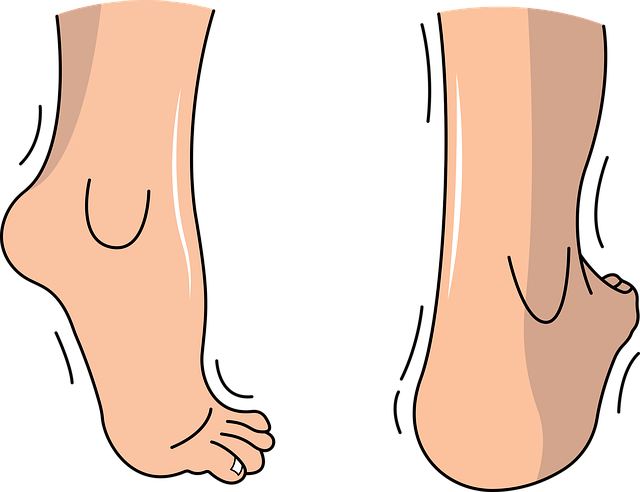The medical malpractice statute of limitations varies by jurisdiction but generally begins when an injury is discovered or reasonably should have been noticed. The Discovery Rule states that claims accrue when patients recognize their harm and its causal link to negligence, often after unexpected health issues arise. Timeframes range from one to three years, with strict deadlines; failure to file within this period results in loss of rights. Retaining a specialized personal injury lawyer is crucial for navigating complexities, ensuring compliance, preserving evidence, and maximizing compensation in medical malpractice, truck accidents, and other personal injury cases.
“Injury victims may face a race against time when it comes to legal redress, governed by crucial concepts like the Statute of Limitations and the Discovery Rule. This article delves into these essential aspects, particularly focusing on medical malpractice claims and their stringent time frames. Understanding when the legal countdown begins is pivotal; it can make the difference between securing justice and missing a vital opportunity. Let’s explore ‘Understanding the Statute of Limitations: When Does the Timer Start?’ and ‘The Discovery Rule: Uncovering Hidden Injuries…’ to navigate complex legal landscapes.”
- Understanding the Statute of Limitations: When Does the Timer Start?
- The Discovery Rule: Uncovering Hidden Injuries and Their Legal Impact
- Medical Malpractice Claims: Navigating Time Frames and Legal Action
Understanding the Statute of Limitations: When Does the Timer Start?

Understanding the Statute of Limitations is a critical aspect of any legal case, especially medical malpractice claims. The clock starts ticking from the moment an injury is discovered or should reasonably have been noticed by the patient. This period, known as the Statute of Limitations, varies across jurisdictions but generally sets a timeframe within which legal action must be taken. For medical malpractice cases, it often begins on the date of the alleged negligence or when the patient becomes aware (or reasonably should have been aware) of the harm caused by the treatment.
In many places, there’s a specific statute, like the two-year rule for personal injury claims in some states, which dictates this time frame. This means that if you suspect medical malpractice, prompt action is crucial. Retaining a competent lawyer who specializes in medical malpractice cases can help navigate these complexities and ensure your rights are protected. Understanding when the legal countdown starts could make all the difference in achieving a successful client recovery in real estate litigation or other personal injury scenarios, including truck accidents.
The Discovery Rule: Uncovering Hidden Injuries and Their Legal Impact

The Discovery Rule plays a pivotal role in medical malpractice cases, as it dictates the timeline for filing claims related to hidden or latent injuries. This legal principle holds that a claim doesn’t accrue until the injured party discovers or should have discovered the injury and its causal link to the alleged negligence. In the context of medical malpractice, this often involves patients realizing there was an error in their treatment, leading to unforeseen health issues or complications. For instance, a patient might experience persistent pain or unusual symptoms after what seemed like a routine procedure, prompting them to seek further medical attention and uncover the initial oversight.
Understanding the Discovery Rule is crucial for individuals dealing with truck accident injuries, auto accident injuries, or any other incident resulting in hidden injuries. It means that even if an accident occurs, the legal countdown doesn’t begin until the victim becomes aware of the extent of their injuries and their potential for long-term impact. This knowledge empowers victims to take proactive steps towards seeking accident compensation by ensuring they meet the requirements within the applicable medical malpractice statute of limitations.
Medical Malpractice Claims: Navigating Time Frames and Legal Action

When it comes to medical malpractice claims, understanding the legal timeline is paramount. The medical malpractice statute of limitations varies by jurisdiction, but generally, victims have a limited time frame to file suit after discovering the injury. This period, often ranging from one to three years, begins when the patient either suffers the harm or discovers (or should have reasonably discovered) the negligent act. Failure to initiate legal action within this timeframe can result in permanent loss of rights.
Navigating these complexities requires the expertise of a qualified personal injury lawyer who specializes in medical malpractice cases. They guide clients through the process, ensuring compliance with statutes and deadlines. Unlike commercial disputes where timelines might be more flexible, personal injury claims demand swift action to preserve evidence, secure witness statements, and maximize potential compensation. Timely legal intervention is crucial to protect one’s rights and ensure a just outcome.
Understanding the legal timeline, especially regarding the discovery of injuries, is crucial for individuals considering medical malpractice claims. The Statute of Limitations and the Discovery Rule are essential components that can significantly impact a case’s outcome. By being aware of these time frames and the potential for hidden injuries to surface later, individuals can navigate their legal options more effectively. Remember, prompt action after an incident or discovery of harm is key, as medical malpractice statute of limitations exist to ensure fairness while protecting patient rights.






